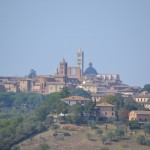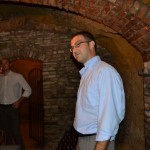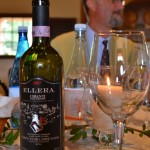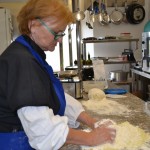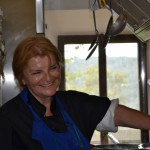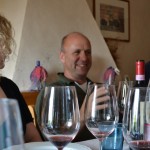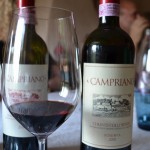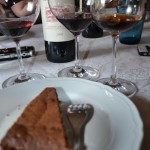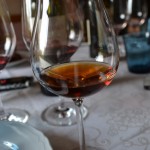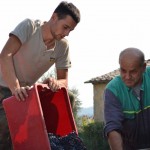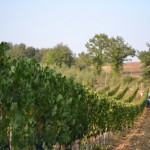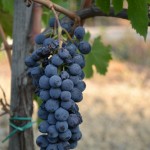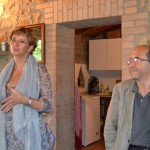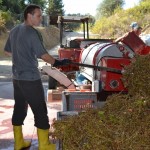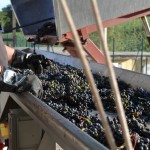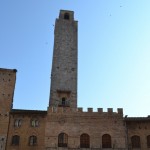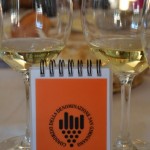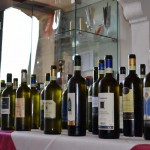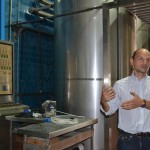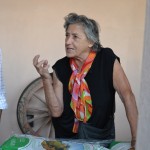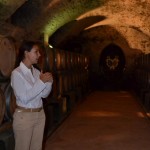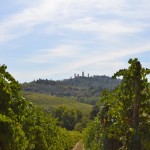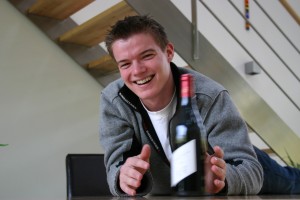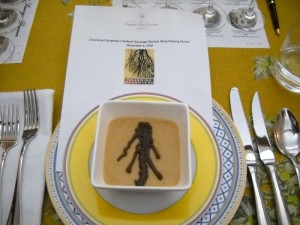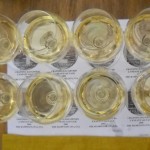Autoctona del Bierzo, an organization established to represent several wineries from the Bierzo DO wine region made its first official visit to the U.S. in early May. Located in northwest Spain, the region is made up of a group of small valleys coupled with wider, flatter areas known as low Bierzo. Situated within the province of León, this region is relatively small and is comprised of many producers each with a relatively limited amount of land. Here, the mild climate has some humidity, but the low altitude prevents problems with frosts.
The region’s flagship grape is Mencia (also known as Negress), a red variety that adapts well to the local climate. Although the variety dates to Roman times, its current cultivation is limited to the Iberian Peninsula. It accounts for 65% of plantings in Bierzo, supplemented by Garnacha Tintorera and the experimental Tempranillo, Cabernet Sauvignon and Merlot.
Typically, Mencia is used to produce both reds and roses. Its thin skins and soft flesh result in wines with light tannins and a velvety palate, with cherry and strawberry as the predominant fruit notes. Many producers make their wines from 100% Mencia. However, with differences in vine age, varied use of oak and aging periods, each winery has a full portfolio often ranging from unwooded styles and young (those labeled as Joven) to aged Crianza and Reserva wines. The May tasting provided an opportunity to taste this grape in several iterations and I was particularly impressed with Bodegas Estefania’s line-up.
The region itself is also home to indigenous white varieties including Palomino and Godello, the latter of which offers wines with good body and apple aromas. Dona Blanca, a mildly aromatic grape, makes up only 10% of all plantings and is on the decline.
The opportunity to meet these producers and taste through their wines was eye-opening and I am sure we will see more of Bierzo in the years to come.
WHITE WINES
Bodega Luzdivina Amigo, Baloiro Blanco 2010, Bierzo, Spain,16.00
This blend of 60% Palomino and 40% Dona Blanca was produced from 60-70 year old vines. Sharp cheese and sherry-like aromas greeted the nose. On the palate, the wine was rich and concentrated with yeast, citrus and a slight oxidized note, which gave the wine some depth.
Bodega Luzdivina Amigo, Baloiro Godella 2009, Bierzo, Spain, $34.00
With only 600 bottles produced, this wine is quite limited. It was aged for 8 months in French oak, with the wood showing on both the nose and palate in addition to fresh herbs, tarragon and citrus.
Palacio de Canedo Prada a Tope Blanco 2009, Bierzo, Spain, $N/A
Produced from 100% Godello, this wine displayed youth aromas of flowers and herbs, which persisted on the full-bodied palate with the addition of lime.
RED WINES
Bodegas Estefania Tilenus 2010, Bierzo, Spain, $15.00
This unwooded wine is comprised of 100% Mencia. It is very youthful with bright, fresh berry and cherry notes.
Bodegas Estefania Tilenus Envejecido 2007, Bierzo, Spain, $20.00
Produced from old Mencia vines ranging from 30-50 years old, half of this wine was aged in tank with the remainder in wood (a combination of both French and American barrels) for 8-12 months. Slightly less bright on the palate than the young wine, it still showed lively acidity, with strawberry, cherry and licorice.
Bodegas Estefania Tilenus Crianza 2005, Bierzo, Spain, $30.00
Low yielding Mencia vines averaging 60-80 years old were sourced for this wine. The barrel aging regimen wasn’t specified, but as a Crianza, it would have been longer than the Envejecido. This wine was more herbal on the nose likely due to its age, with more noticeable oak on the palate.
Bodegas Estefania Tilenus Pagos de Posada 2003, Bierzo, Spain, $50.00
This limited production wine comes from a single vineyard with Mencia vines at or older than 80 years old. Yields are exceedingly low (1 kg/ha). Oak and leafy notes took precedence over the faded strawberry aromas, but the palate was still lively with leaf, oak, strawberry, raspberry, tobacco, culminating in long length.
Bodegas Estefania Tilenus Pieros 2002, Bierzo, Spain, $120.00
This wine hails from a small, rare plot of land, planted exclusively to Mencia. There was an absence of fruit on the nose, instead, developing aromas of tobacco leaf, dried herbs and pencil lead dominated. The wine showed light minerality on palate, with concentrated strawberry and leafy flavors. Overall, the wine was complex, and balanced, with extremely long length.

